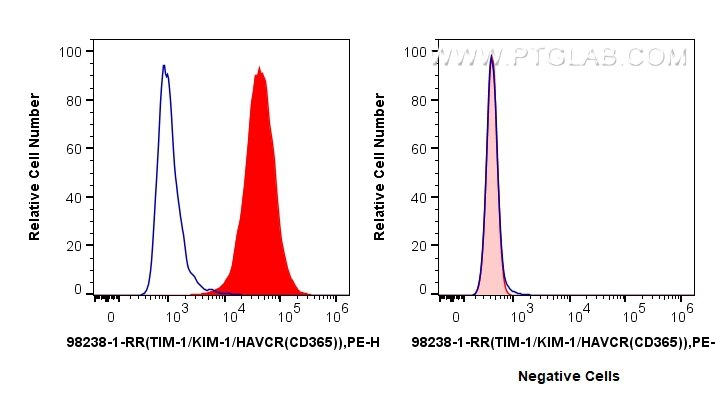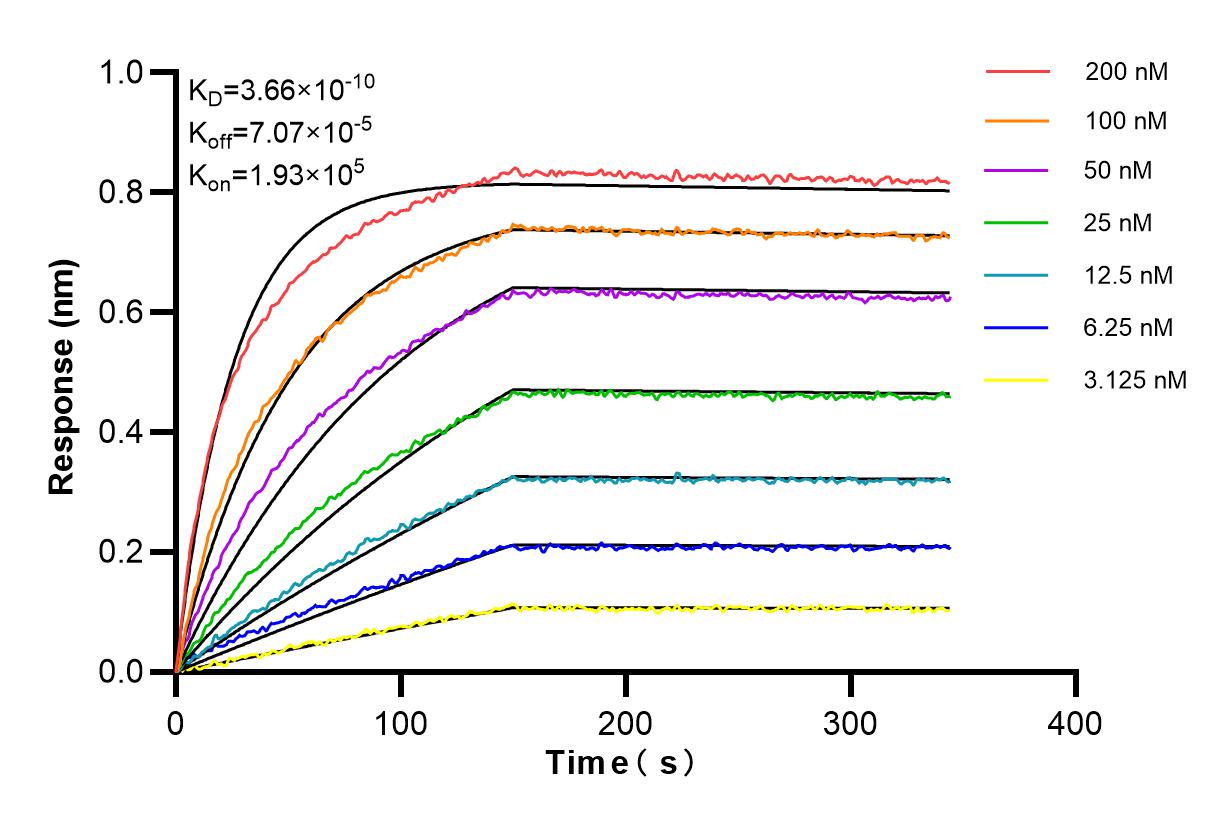Tested Applications
| Positive FC detected in | HuH-7 cells |
Recommended dilution
| Application | Dilution |
|---|---|
| This reagent has been tested for flow cytometric analysis. It is recommended that this reagent should be titrated in each testing system to obtain optimal results. | |
| Sample-dependent, Check data in validation data gallery. | |
Product Information
98238-1-RR targets KIM-1/HAVCR1 in FC applications and shows reactivity with human samples.
| Tested Reactivity | human |
| Host / Isotype | Rabbit / IgG |
| Class | Recombinant |
| Type | Antibody |
| Immunogen | Recombinant protein Predict reactive species |
| Full Name | hepatitis A virus cellular receptor 1 |
| Calculated Molecular Weight | 39kDa |
| GenBank Accession Number | NM_001173393.3 |
| Gene Symbol | HAVCR1 |
| Gene ID (NCBI) | 26762 |
| Conjugate | Unconjugated |
| Form | Liquid |
| Purification Method | Protein A purfication |
| UNIPROT ID | Q96D42 |
| Storage Buffer | PBS with 0.09% sodium azide, pH 7.3. |
| Storage Conditions | Store at 2 - 8°C. Stable for one year after shipment. |
Background Information
Kidney injury molecule 1 (KIM-1), also known as Hepatitis A virus cellular receptor 1 (HAVCR1), CD365, or T-cell immunoglobulin and mucin domain 1 (TIM-1), is a class I integral membrane glycoprotein, with an ectodomain containing Ig-like domain and a mucin domain. KIM-1 acts as a membrane receptor for hepatitis A virus (HAV) (PMID: 9658108; 8861957). KIM-1 provides a costimulatory signal for T cell activation and inhibits the development of peripheral tolerance (PMID: 16284246; 15793575). KIM-1 may be involved in the regulation of asthma and allergic diseases (PMID: 14534576). It has been reported that KIM-1 is shed into urine after acute kidney damage and is a marker of renal tubular injury (PMID: 14600030).
Protocols
| Product Specific Protocols | |
|---|---|
| FC protocol for KIM-1/HAVCR1 antibody 98238-1-RR | Download protocol |
| Standard Protocols | |
|---|---|
| Click here to view our Standard Protocols |





